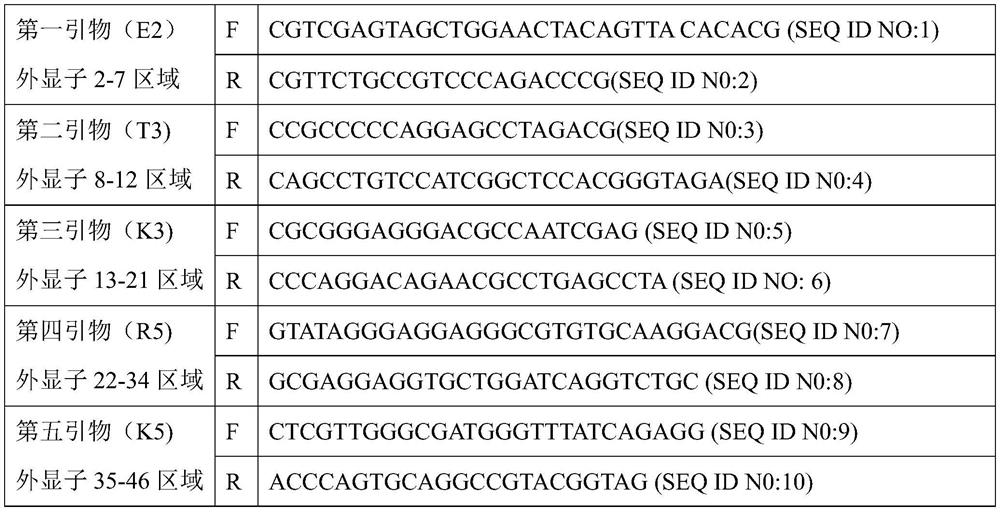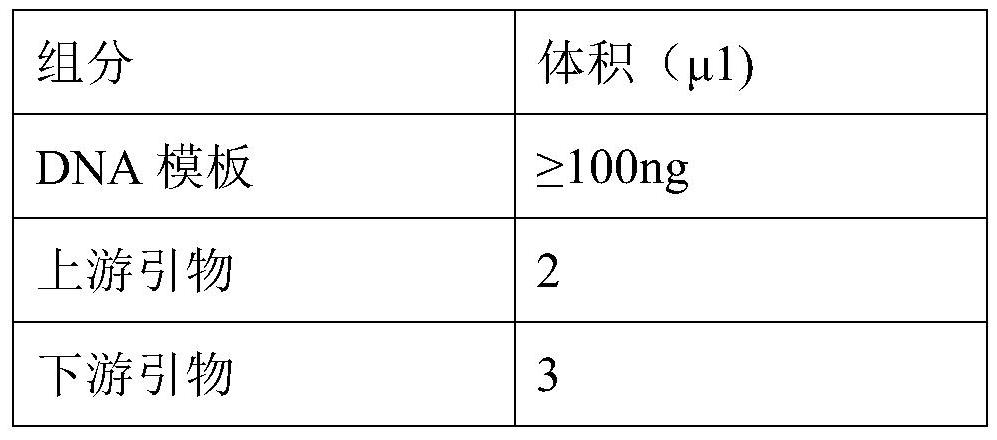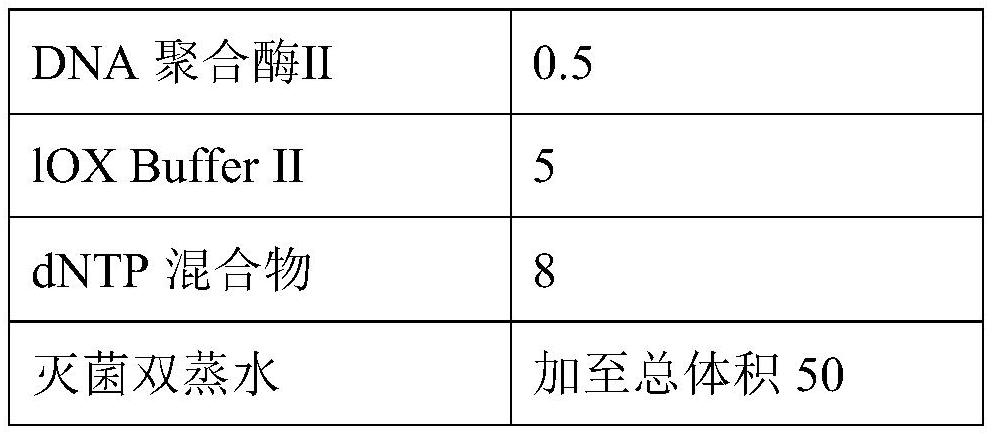Reagent composition and detection method for detecting autosomal dominant polycystic kidney disease
- Summary
- Abstract
- Description
- Claims
- Application Information
AI Technical Summary
Problems solved by technology
Method used
Image
Examples
Embodiment 1
[0037] Using the true gene-specific primers (E2, T3, K3, R5, K5) for the exon 2-46 region of the PKD1 gene to perform long-segment PCR and high-throughput sequencing to detect the mutation of the PKD1 gene after obtaining the informed consent of the subjects On the premise, the PKD1 gene mutation was detected by long-fragment PCR combined with high-throughput sequencing for 70 subjects.
[0038] Use the OMEGA Genomic DNA Extraction Kit (purchased from OMEGA, USA) to extract the genomic DNA of the peripheral blood of the subject, and use the first reagent to extract the genomic DNA; the extracted DNA is detected by a spectrophotometer or other detection instruments for DNA concentration and purity. Concentration greater than 50ng / μl, volume greater than 30μl, A260 / A280 between 1.6-2.0, as a DNA template.
[0039] The DNA templates from each subject were equally divided into five separate reaction tubes, and long-segment PCR primers E2, T3, K3, R5, and K5 (sequences are shown in...
PUM
 Login to View More
Login to View More Abstract
Description
Claims
Application Information
 Login to View More
Login to View More - R&D
- Intellectual Property
- Life Sciences
- Materials
- Tech Scout
- Unparalleled Data Quality
- Higher Quality Content
- 60% Fewer Hallucinations
Browse by: Latest US Patents, China's latest patents, Technical Efficacy Thesaurus, Application Domain, Technology Topic, Popular Technical Reports.
© 2025 PatSnap. All rights reserved.Legal|Privacy policy|Modern Slavery Act Transparency Statement|Sitemap|About US| Contact US: help@patsnap.com



